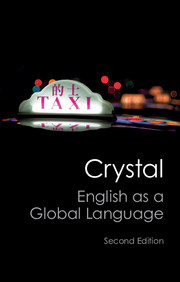5 - The future of global English
Published online by Cambridge University Press: 05 February 2014
Summary
After a while, any account of the social history of English, such as the one recounted in chapters 3 and 4, starts to repeat itself. Under each heading, the narrative identifies a major domain of modern society, puts it in a historical perspective, then discusses the extent to which it now uses or depends upon English. The overwhelming impression, after such an exercise, must be that the language is alive and well, and that its global future is assured.
But linguistic history shows us repeatedly that it is wise to be cautious, when making predictions about the future of a language. If, in the Middle Ages, you had dared to predict the death of Latin as the language of education, people would have laughed in your face – as they would, in the eighteenth century, if you had suggested that any language other than French could be a future norm of polite society. A week may be a long time in politics; but a century is a short time in linguistics.
In speculating about the future of English as a world language, therefore, we need to pay careful attention to indications which seem to go against the general trend. And we need to ask, in broad terms: What kinds of development could impede the future growth of English? It will then be possible to arrive at a balanced conclusion.
- Type
- Chapter
- Information
- English as a Global Language , pp. 123 - 191Publisher: Cambridge University PressPrint publication year: 2012



